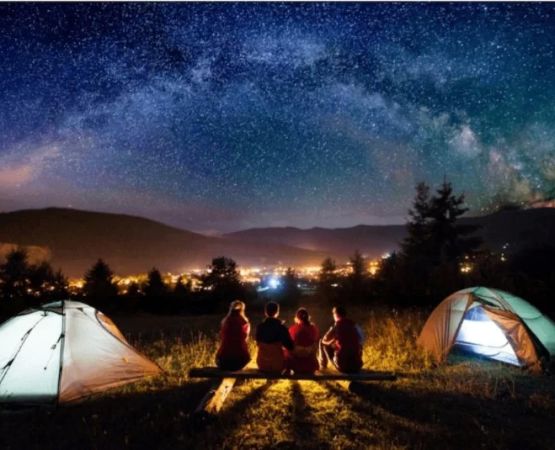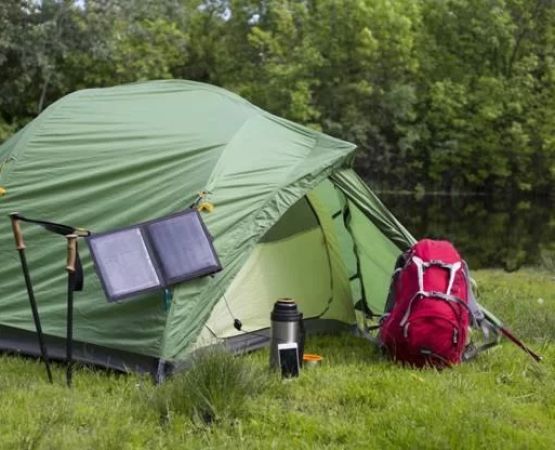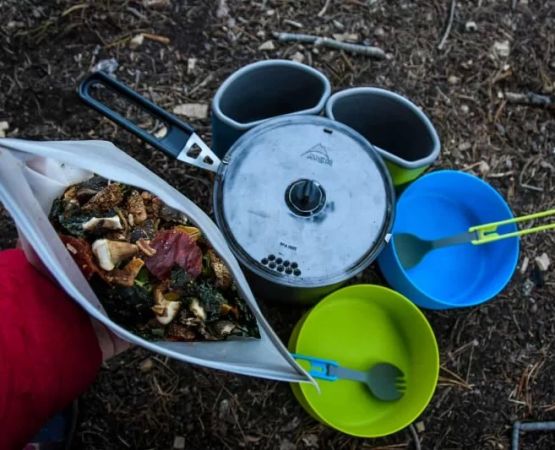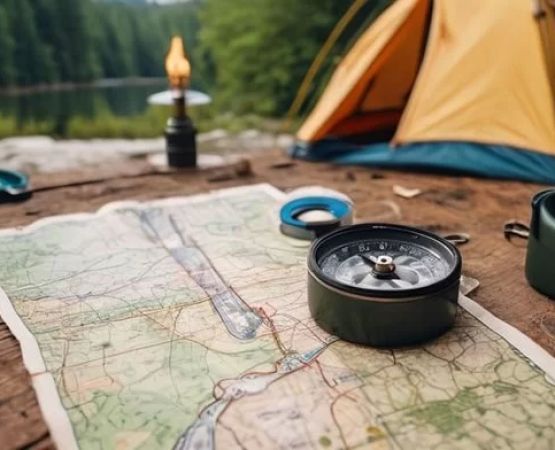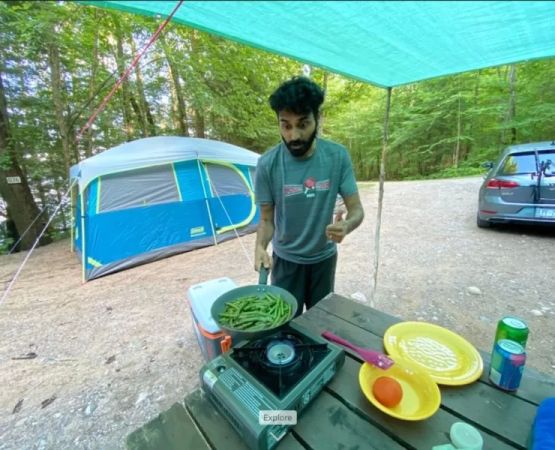Embrace Eco-Friendly Camping: How to Use Biodegradable Soap on Your Next Trip
As someone who loves spending time in the great outdoors, I know how important it is to minimize our impact on the environment. Whether I'm hiking through dense forests or lounging by a tranquil lake, one thing I always make sure to bring with me is biodegradable soap. It's not only a practical item for cleaning up while camping, but it’s also an essential tool for ensuring we leave no trace behind. In this article, I’ll walk you through why biodegradable soap is crucial for eco-friendly camping, how to use it properly, and tips for maintaining sustainability while enjoying your camping experience.
1. Why Choose Biodegradable Soap for Camping?
When you’re out in nature, it’s easy to forget that even the smallest actions can have a lasting impact on the environment. Regular soaps, shampoos, and detergents contain chemicals that can be harmful to the ecosystem. These substances can pollute nearby water sources, kill aquatic life, and disrupt local wildlife. This is where biodegradable soap comes in.
Biodegradable soap is specifically designed to break down quickly and safely when exposed to natural elements like water, air, and soil. This means it won’t linger in the environment or cause harm to plants and animals. It’s a safer alternative to traditional cleaning products, making it an essential item for responsible campers who want to reduce their environmental footprint. Plus, biodegradable soap is often made with natural ingredients, which are less likely to irritate your skin or cause harm to the planet.
Using biodegradable soap while camping is not only a matter of personal hygiene but also a matter of environmental responsibility. So, the next time you plan a camping trip, make sure to choose eco-friendly soaps that align with your commitment to preserving nature.
2. Types of Biodegradable Soap and How to Choose the Right One
With so many options available, choosing the right biodegradable soap for your camping trip can be a bit overwhelming. There are various types of biodegradable soap, and each one has its own unique features. Here's a breakdown of the different types and how to select the best one for your needs:
1. Liquid Biodegradable Soap
Liquid biodegradable soap is one of the most popular choices for campers due to its versatility. It’s easy to pack and use, and it’s effective for cleaning dishes, washing your hands, and even showering. Liquid soaps are often concentrated, so a little goes a long way. Make sure to choose a soap with a mild scent or a fragrance-free option to avoid attracting wildlife or disturbing the natural environment.
2. Biodegradable Bar Soap
Bar soaps are another great option for camping, especially if you want a compact and lightweight solution. Bar soaps are easy to carry and won’t spill in your bag. They’re perfect for personal hygiene needs like washing your body and face. Just like liquid soaps, biodegradable bar soaps are made from natural ingredients and are free from harmful chemicals. However, be mindful of how you store the soap to avoid contamination from dirt and grime while camping.
3. Multi-Purpose Biodegradable Soap
Some biodegradable soaps are designed to be multi-purpose, meaning they can be used for everything from washing your dishes to cleaning your body and even brushing your teeth. These all-in-one soaps are especially useful if you're packing light or have limited space. However, it’s essential to read the label and ensure that the soap is safe for all intended uses.
3. How to Properly Use Biodegradable Soap While Camping
Now that you have your biodegradable soap, it’s important to know how to use it properly while camping. The key is to minimize your impact on the environment and avoid contaminating nearby water sources. Here are a few simple guidelines to follow:
1. Use Soap Sparingly
One of the most effective ways to minimize your environmental impact is by using as little soap as possible. You don’t need to use large amounts of biodegradable soap to get clean. A small drop of liquid soap or a small lather from a bar soap is often enough to get the job done. Using less soap also helps conserve water, which is essential when camping in remote areas.
2. Avoid Using Soap Near Water Sources
Even biodegradable soap can have an effect on the environment if it’s not used properly. To minimize any potential harm, always avoid using soap directly near lakes, rivers, or streams. Instead, wash yourself and your dishes away from the water source. This prevents any soap residue from entering the water and harming aquatic life. If you must wash near water, do so at least 200 feet away from the water’s edge to ensure that any soap runoff is absorbed into the ground before reaching the water.
3. Use a Washing Basin or Container
Another best practice is to wash your hands, dishes, and body in a portable washing basin or container. This helps contain the soapy water, which can then be disposed of properly. You can use a small, collapsible sink or a bucket to collect the dirty water. Once you’re finished, pour the soapy water over a patch of soil that’s away from natural water sources. This allows the earth to filter and absorb the soap residue naturally.
4. Rinse Thoroughly
Always rinse your body and dishes thoroughly to ensure that no soap is left behind. Soap that’s not fully rinsed off can linger and cause harm to the environment. It’s especially important to rinse off thoroughly when you’re using soap for washing dishes or personal hygiene. The cleaner you leave the items, the less likely they are to affect the natural surroundings.
4. The Importance of Eco-Friendly Camping Practices
Using biodegradable soap is just one part of responsible camping. As outdoor enthusiasts, we have a responsibility to minimize our environmental footprint and protect the areas we love to explore. Here are a few additional eco-friendly camping practices that complement the use of biodegradable soap:
1. Pack Out All Trash
One of the most important rules of camping is to always pack out everything you bring in. This includes trash, food scraps, and any other waste materials. Make sure to carry garbage bags and dispose of your trash properly, even if it means carrying it back to a designated waste disposal site.
2. Leave No Trace
Follow the Leave No Trace principles, which encourage campers to minimize their impact on the environment. This includes staying on designated trails, avoiding disturbing wildlife, and leaving natural areas as you found them.
3. Choose Eco-Friendly Gear
Investing in sustainable camping gear, like reusable water bottles, compostable utensils, and eco-friendly tents, can make a significant difference in reducing waste and environmental damage. Small changes like these add up over time and help preserve the beauty of the outdoors for future generations.
5. Real-Life Experience: My Eco-Friendly Camping Adventure
During a recent camping trip in the beautiful Shenandoah National Park, I decided to implement all of the eco-friendly practices I’ve learned over the years, including using biodegradable soap. My friends and I were excited to hike through the mountains and enjoy the serene surroundings, but we were equally committed to leaving the area just as pristine as we found it.
Every evening after we cooked our meals, we would use our biodegradable soap to wash the dishes, but we made sure to do so away from any streams. We set up a small washing station away from the water, and it worked beautifully. By the end of the trip, we had used very little soap, and everything was properly rinsed and disposed of in the soil, far away from the water. It felt great to know that our camping experience didn’t leave any harmful residue behind, and we were doing our part to protect the environment.
Using biodegradable soap, along with following other sustainable camping practices, made the trip even more enjoyable. Not only did we get to immerse ourselves in nature, but we also felt responsible and proud of our commitment to keeping the area clean.

